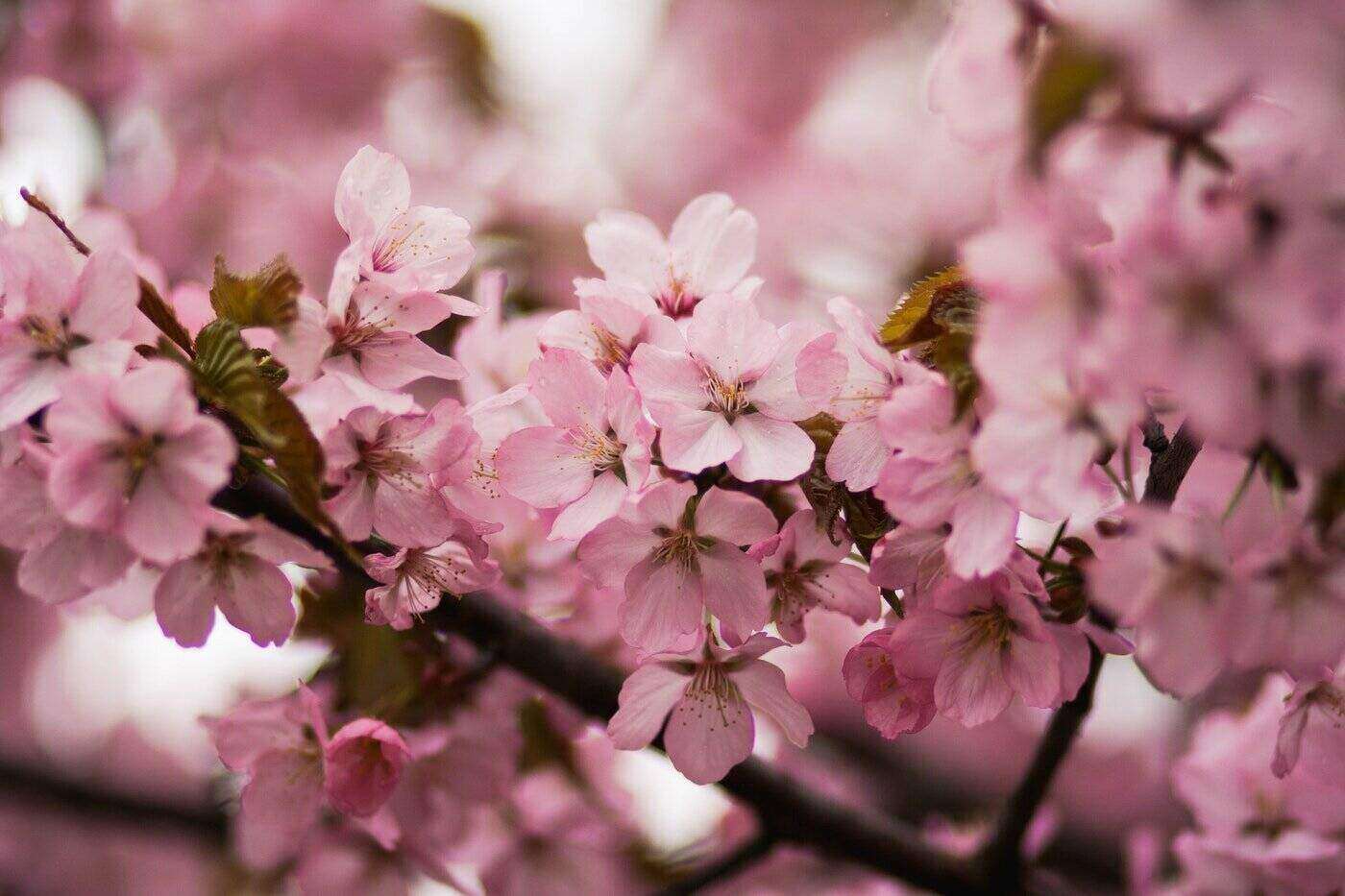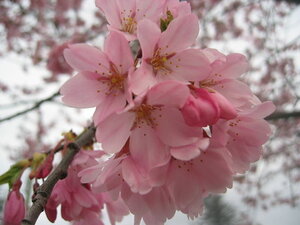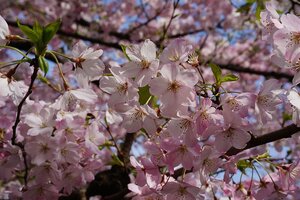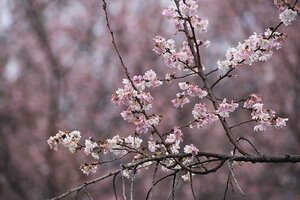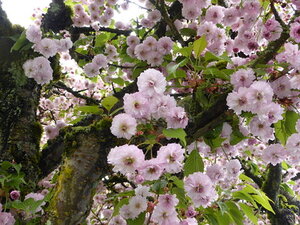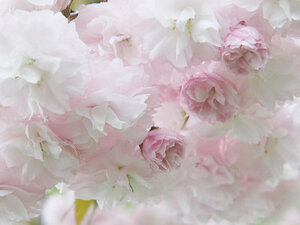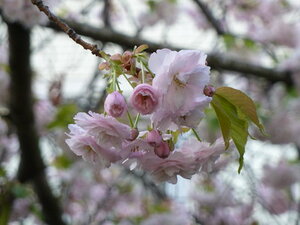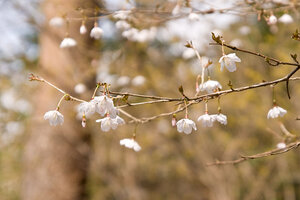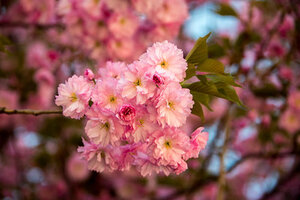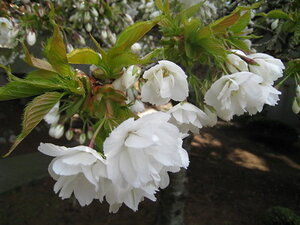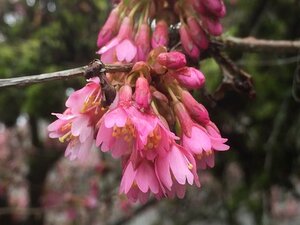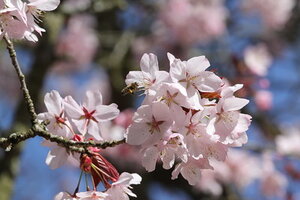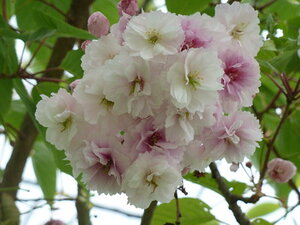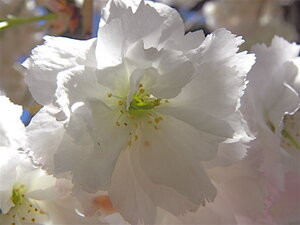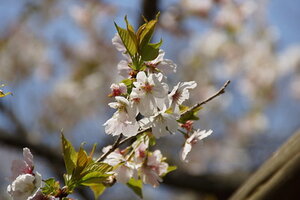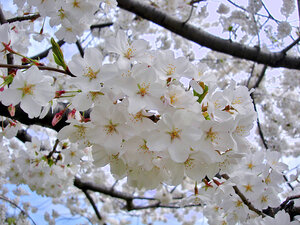Warm temperatures and longer days are nice, but cherry blossoms are objectively one of the greatest things spring has to offer. Celebrated over centuries in many different nations, the arrival of cherry blossoms creates a showstopping natural display that you would have to be a literal robot not to appreciate. If you want to bring some of that magic home, read on to learn how to choose and grow your own cherry blossom tree.
Choosing a Cherry Blossom Tree
There are over 200 varieties of ornamental cherry tree. To narrow your search, start by choosing a variety that’s appropriate to your hardiness zone and to the space you have available. Flowering cherry trees can grow quite tall and also quite wide, so not all will be a good fit for smaller yards.
That said, not all ornamental cherry trees are giants. A few varieties, like Kojo-No-Mai and Cheals Weeping Cherry, are small enough to be grown in containers.
Once you’ve narrowed your search to trees that will thrive in your climate and space, you’ll have many aesthetic choices to make. One of the joys of cherry blossom trees is how diverse their flowers are—you’ll have options on everything from colour to petal shape and number to single or double blooms to bloom time. Their leaves and bark are equally diverse, making them uniquely lovely far beyond the spring season.
To give you a sense of the beautiful choices ahead of you, here are some common types of ornamental cherry tree.
Afterglow (Prunus x yedoensis “Afterglow”)
Akebono (Prunus x yedoensis “Akebono”)
Autumn Flowering Cherry (Prunus subhirtella var. autumnalis)
Cheals Weeping Cherry (Prunus Kiku-shidare-zakura)
Fugenzo (Prunus serrulata “Fugenzo”)
Ichiyo (Prunus serrulata f. unifolia)
Kojo-No-Mai (Prunus incisa “Kojo-No-Mai”)
Kwanzan (Prunus serrulata “Kwanzan”)
Mount Fuji Cherry (Prunus “Shirotae”)
Okame (Prunus x “Okame”)
Sargent Cherry (Prunus sargentii)
Shirofugen (Prunus serrulata “Shirofugen”)
Shogetsu (Prunus serrulata “Shogetsu”)
Usuzumi (Prunus spachiana f. ascendens)
Weeping Cherry (Prunus Subhirtella var. pendula)
Yoshino (Prunus x yedoenis)
Cherry Blossom Tree Care and Considerations
Ornamental cherry trees are relatively easy to care for. They prefer full sun and moist, well-drained soil, but aren’t particular about soil pH or type.
They don’t like to be crowded, so plan your landscaping space with the full height and spread of the tree in mind. This might mean planting each tree a solid 30-40 feet apart, depending on variety.
Planting
Plant in spring, after the last frost date or in early fall, leaving enough time for the roots to establish themselves before the cold weather hits.
To plant, dig a hole only slightly larger than the root ball of your new tree. The tree should be planted so the tops of the roots are level with the surrounding soil. Some care should be taken to make sure that the tree trunk is planted straight.
Once the hole is filled and levelled, apply mulch, being careful not to pile the mulch up against the trunk. If the tree is in an exposed location, consider staking it until its roots take hold. Water thoroughly until the tree is established. Your new tree will benefit from good, deep watering once a week for half an hour.
Ongoing Care
Once established, watering needs are moderate. Water only in dry periods—cherry trees don’t enjoy having wet feet. Fertilize in spring, either with a layer of organic matter applied around the base, or with a commercial fertilizer.
These trees can be prone to issues with fungal disease and insects. Be on the lookout for insect pests such as caterpillars, aphids, borers, Japanese beetles and leafhoppers. Trees should be checked over for leaf spot, powdery mildew, silver leaf, black knot, root rot and other diseases.
Prune away only dead or infected growth. You won’t need to prune for shape, although you may also want to thin out branches if the tree is getting too dense. You can do this yourself or ask a local tree surgeon. Your cherry blossom tree will need adequate air circulation to prevent and limit disease. Time your pruning shortly after the tree is finished flowering.
A Few Final Benefits
Should you need a few more reasons to get on board with ornamental cherry trees, here are three. They’re pollinator friendly and are attractive to bees and butterflies. Unlike fruit-producing trees, they don’t leave a big mess. And finally, you can eat the petals. They can be used fresh, dried or preserved in teas and desserts. These trees just keep on giving.
Feature image: Kristina Paukshtite; Image 1: Vancouver Cherry Blossom Festival; Image 2: SLIMHANNYA; Image 3: Arlington National Cemetery; Image 4: Wendy Cutler/Vancouver Cherry Blossom Festival; Image 5: T. Kiya; Image 6: Wendy Cutler; Image 7: Σ64; Image 8: angela n.; Image 9: Vancouver Cherry Blossom Festival; Image 10: Shirley Willard/Vancouver Cherry Blossom Festival; Image 11: Mark Kent; Image 12: Wendy Cutler; Image 13: Peter Stevens; Image 14: ume-y; Image 15: Brandy Hollins; Image 16: Uberlemur; Image 17: Victoria Borodinova
